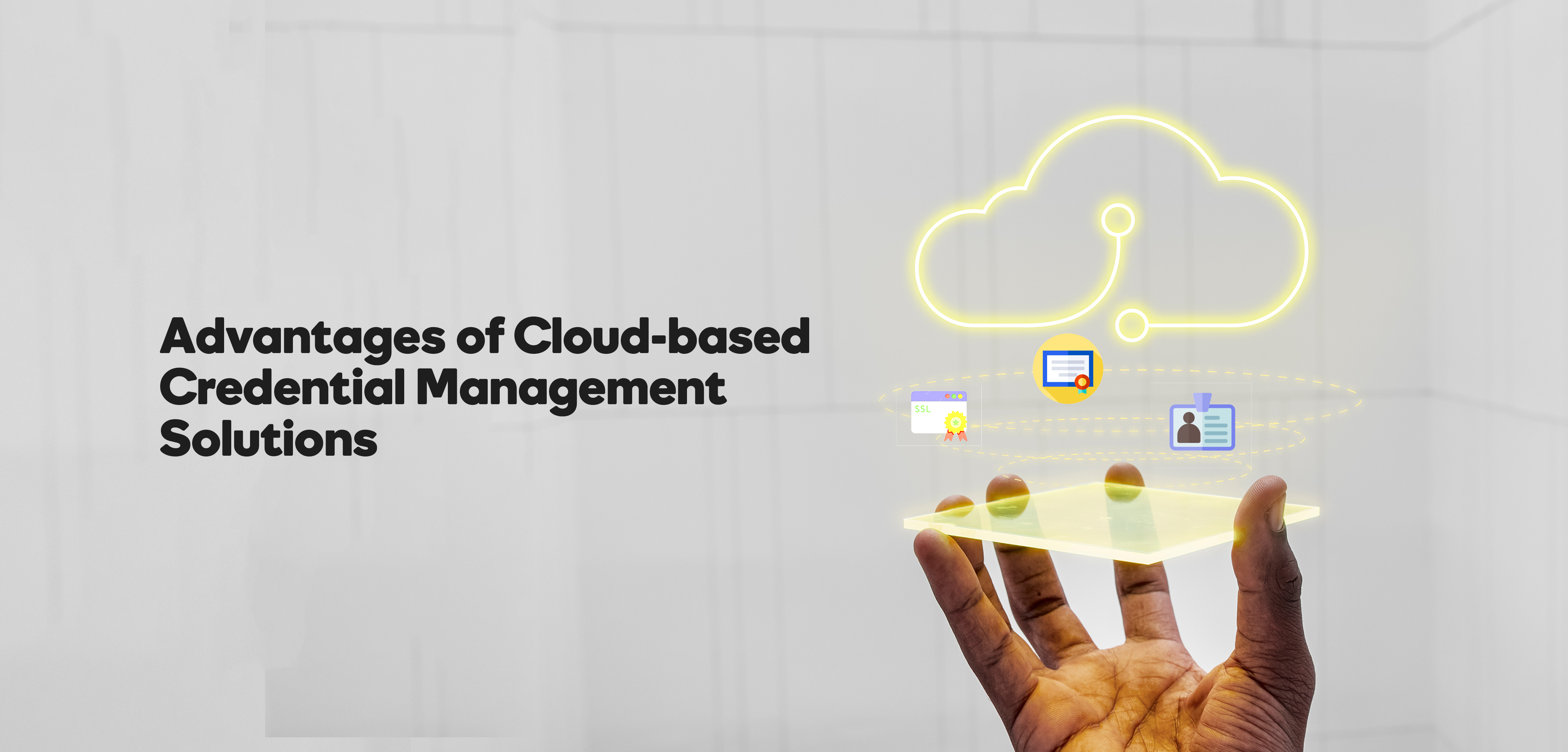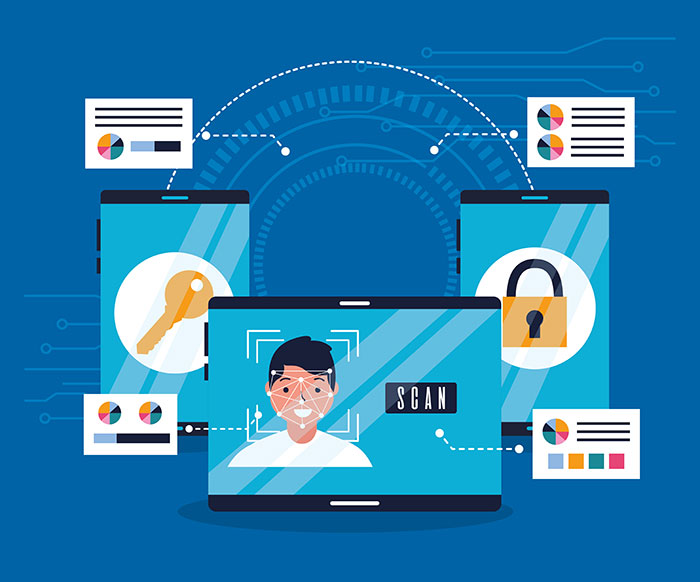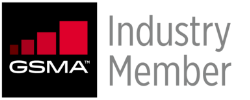All The Compliance Checkboxes You Should Tick As A Contractor In Construction
by Temidayo Afolabi

Every company has a boss or leadership that gives directives that must be adhered to at all times; the same goes for industries; there is always a presiding body that calls the shot and ensures all events are regulated.
From hiring the best hands to ensuring work is done the right way, the construction industry is guided by a couple of binding principles that must be complied with.
What is Compliance?
Compliance simply means abiding by a set of requirements, standards, or regulations.
Compliance in Construction involves meeting the requirements of hiring workers on site, confirming they are medically fit for task, providing safety gear and warning signs during construction, and ensuring they work under the right conditions.
5 Compliance Checkboxes for Construction Contractors
Building Codes
These are a set of requirements that must be met to ensure only strong and safe structures are constructed. These requirements are set to help prevent accidents by any means, during construction or after. The potential hazards that building codes avert are fire hazards, electrocution, and building collapse.
Lien Standards
These are requirements that give a worker the legal right to get paid for work done and any cost incurred while purchasing any resource during a project.
Safety Regulations
These are a set of safety principles that must be adhered to keep a construction site safe for every worker and pedestrian nearby. Some of the safety materials the regulation requires are ladders, fall protection, face protection, scaffolding, and instruction signs.
Contractual Agreements
This requirement mandates workers to not be paid below minimum wage, that benefits and compensation payments are non-discriminatory, and that all project details are provided stated as accurately as possible.
Background Checks
There is a limit to the number of background checks a contractor can perform on a worker. A properly documented approval must be obtained by the contractor before background checks can be carried out.
Why Contractors Carry Out Background Checks on Workers
The construction industry is known for its physicality, heavy-duty machinery, and on-site hazards. In fact, according to the Bureau of Labor Statistics, there are approximately 150,000 workplace accidents on construction sites every year. Most of these accidents on the job site are usually caused by unpredictable circumstances, while others are caused when unfit workers handle safety-conscious parts of the job.
Conducting background checks in the form of requesting and verifying health certificates is important for the success of your project, your workers, your company and you.
With a tangible means of proving through verifiable fit-for-work certificates, that workers do not have a record of critical illnesses or allergies that could harm them on the job, you can protect your reputation and your project can start and end in due dates with no mishaps, unexpected fines or on-site tragedies.
What Do You Risk Losing When You Violate These Standards?
You may incur losses during construction, face legal penalties, have to abandon your project, damage your reputation, or even worse, be imprisoned.
What Is The Forward Thinking Approach For Contractors?
Estimating, planning, purchasing materials, and trying to get the job done by the right professionals can sometimes become overwhelming and a distraction from health and safety, but the place of compliance cannot be trivialised; automating some of these processes may be your best bet and that’s where a solution like Seamfix Care comes into play.
Seamfix Care is a one-stop technology made for contractors like you to beat compliance in the area of digitally requesting and verifying workers’ health certificates right from your mobile device.
Why Semfix Care?
Seamfix Care is an industry platform that connects you, workers and occupational health services. On Seamfix Care you can interact and verify workers’ health certificates with a unique system that combines visual IDs and custom QR codes to prevent certificate forgery and identity theft.
With Seamfix Care, you no longer have to worry about violating compliance standards or working with unfit employees.
Ready to become a better contractor with Seamfix Care? Talk to us now.
Related News
From Africa to The UK, Emmanuel Adeyemo Discusses Seamfix’s Transition to a Global Market
by Temidayo Afolabi

Hi there, who do we have here?
Emmanuel: My name is Emmanuel Adeyemo. I’m the Product Manager for Seamfix Care, a product that has been a part of Seamfix’s pipelines in the UK for the Occupational Health Industry. Before now, I’ve worked in several other spaces within the Seamfix team from the Nigerian branch … I started with the business development team as a Business Insight and Partnership Manager for a few years, then transitioned into Product Management, and have been at it for over two years.
So, what has the transition experience been like in terms of challenges and everything in between?
Emmanuel: Okay. Moving to the UK and working with the UK team has been demanding in terms of the output, but in terms of challenges, I wouldn’t say it’s been challenging because it’s actually nothing new. I’ve been around for a while, so I know how to handle the challenges here. But, it has been very demanding because this is a new environment for us as a business. We are striving to do things right in terms of the business and also identify the right problems to solve.
So, in terms of challenge and demand, it’s been demanding for us because it’s not easy to be a technology giant coming from Nigeria and trying to build something new in an entirely different environment.
Okay, that’s very good. So far, seeing what Seamfix has been doing in the UK, and you being an inside man. Can you tell us what Seamfix is trying to achieve in the UK market?
Emmanuel:
Okay, for Seamfix, the basic idea for us was expansion and the UK is not the only country that we’ve expanded to. We’ve expanded to The UAE and we are also present in Uganda. But, the UK is a strategic location for us as a business – Europe. Having succeeded in Nigeria and by extension, Africa, we believed it was time to explore other markets, fields, and other problems that are not peculiar to Africa.
For instance, there are particular ways that we’ve looked at problems with the perspective of it being peculiar to Africa. So, we thought about how we can build products that not only pertain to Africa, but to the global economy. In the identity management space, we have done a lot of national enrollment for people in the diaspora; close to 2000 records.
We are also trying to build a new product for the Occupational Health Industry, basically, we are motivated by how we can contribute to the global economy, which is one of the necessities of expansion as a business.
Talking about expansion, is it a case of “doing great things from where we are” and then bringing these solutions to different places where they are needed? Or is it a case of “we have this thing and we want people to see more of this, to enjoy this in other areas”?
Emmanuel: I’d say it’s all of the above. We have services and solutions that we believe that other economies that we are pivoting in, such as the UK, UAE, and Uganda can actually benefit from. We are also trying to get more insight into their markets; how they operate, the extensions, and the areas or gaps that we believe we can also solve.
Yes, we’ve advocated success in Nigeria, but it’s also ideal that we look to the outside. By outside, I mean we are looking into this economy to see how to improve and what ideas to explore.
So, we’ve done a lot of exploration in this market and we’ve been able to get a number of solid ideas that we believe can transform some of the industries that we are currently looking at.
All right. So far, based on the feats you’ve achieved, can you say that Seamfix is on the track to doing more doing more, especially in the UK?
Emmanuel: Yeah, we are actually on a very good pedestal. Based on our feats over the years, we’ve learned a lot in terms of the problem in the Occupational Health sector. We have created a product that we believe in, one that we’ve also been able to validate in the market. It is something that would transform the way they currently do their business, as well as increase and introduce productivity to their operations. So, yes, we are in a very good position regarding this. I think we’ve done our due diligence. We’ve met and collaborated with industry stakeholders. We’ve learned a lot about the industry and the market that we’re going into.
It is necessary, you know, the decision to build and develop a platform that would be efficient for these segments of people. I’m sure that by the time we roll this out, it will be a massive success, not just for us as a business, but for companies like us that are also thinking of exploring different markets – that you can actually leave Nigeria and go to more established markets like the UK or the UAE and be successful within those markets.
That’s great! Seamfix is currently big in the telco space as a brand with unique ideas and many certifications. In the future, can you say that Seamfix will create a kind of industry that would be enviable for other competitors who wish to get into this space?
Emmanuel: Of course. I think we are gradually getting there. We recently celebrated our 15th anniversary and from that point on, it showed that there’s been tremendous growth and there are a lot of things to still be achieved. So, yeah, the Seamfix that we know now will surely be different from the Seamfix that a lot of people will know in the next few years.
Not only because of the expansions that we are making as a business but because we are one of the most preferred vendors when it comes to data and identity management in Africa. So, we built that industry and we made that name for ourselves. Identity, data management, and civil registration are the things that we’ve succeeded in over time.
We are spreading our tentacles so we don’t limit ourselves to that space, but expand identity and data management within the Occupational Health Industry. So, yes, we are simply going to be a powerhouse. We aim to be a unicorn, and we can boast of the right management team and people to achieve that together.
The strategic roadmap that we put in place shows that the company is headed in the right direction.
Thanks for your time so far, Emmanuel. It’s been a pleasure with you!
Related News
How Biometric-Enabled National Identity Schemes in Africa are Eliminating Cyber Scams Across the World
by Temidayo Afolabi

“Imagine me, a middle-aged woman having a young, handsome Nigerian guy sending me messages that he loves me and wants to marry me. That is just absurd, and I wonder how people fall for these things… well, I did.”
You could tell by the expression of disappointment on *Mrs. Jane’s face as she sobs and shares her ordeal with the internet fraudsters while investigating her case. Like her, several people have had their life savings fall into the hands of unknown scammers who preyed on their vulnerability, gained access to their trust, and conned them out of their money.
Cybercrime has prevailed for a long time simply because anyone involved could sit behind computers and bypass security measures with fake identities.
In another space, ghost employees feigned identities and went on with payroll fraud in the public service; this was the constant outcry of the Nigerian government for a long time, with over seven percent of those audited found guilty of drawing multiple salaries with fictitious names; apart from these local incidents, Nigerians have been indicted of identity theft in the diaspora, which influenced the rate at which other Nigerians were being prejudiced in the diaspora.
With other African countries being spotlighted for similar condemning records, Nigeria and the rest of Africa have turned to biometric enrolment as a key weapon in Africa’s fightback against cybercrime and similar offences.
How National Identity Enrolment is Eliminating Cybercrime
In Nigeria, before the national identity management program launch, the country could not boast of a central identity repository to sustain the secure and reliable accreditation of each adult citizen.
However, with the efforts of the state’s Identity Management Commission (NIMC), Nigeria has enforced a fully functional database that aims to connect every citizen to a valid means of identification through a unique number called the National Identification Number (NIN).
With over seventy-three million NIN issued already after the capture of the registrants’ personal information, including their faces and the collection of their fingerprints, the Minister of Communication, Isa Pantami, believes the initiative has been able to reduce the rate at which identity theft and other criminal activities prevailed. Cybercriminals can now be identified easily if any of their personal information leaks in the process.
To ensure this initiative fulfils its purpose and citizens in remote locations get to participate actively, NIMC introduced a user-friendly Android Enrolment Solution to enable citizens to register themselves through their Android devices and bypass any logistic challenges.
To further check every crucial sector, the NIMC Act now requires every service provider to request and accept the NIN as an identifier or basic identity for all citizens and legal residents before providing them with services and social benefits. This means any individual or platform enrolled on this accessible database has no cover immediately any fraudulent activity gets linked to their registered information.
The easiest way to think of this solution is what Mrs *Jane would do if she had received the declaration of love from her Nigerian admirer. She would have simply asked him for his NIN and would have known very quickly that it was a scam. If he were legitimate, then he would fully declare his identity.
Nigeria’s drive towards ensuring that her entire population (home and abroad) gets registered biometrically into the National Identity Enrolment scheme should be applauded. Aside from the obvious benefits of building a digital economy, it’s on course to eliminate cybercrime, locally and globally, which is one of the highest priorities within the program.
Our Role as a Proactive Brand
Seamfix is proud to have played a major role in this scheme by providing government agencies around Africa with technological solutions like the Android Enrolment Solution that has enabled millions of citizens to digitally enrol their identities into the national database through their Android smartphones.
Globally, we are on the path to fostering international trust with our identity verification solution, https://Verified.Adfrica, which has helped African businesses verify millions of identities for easy and secure access to their products and services.
With Verified.Africa, businesses and individuals in the diaspora can now successfully verify the identities of Africans before dealing with them to ensure trust and compliance.
Get in touch today to discuss how we can help you.
*The asterisked name is fictional; hence has no direct link to any person.
Related News
What Difference Does A Digital Fit-for-Task Certificate Make For You?
by Temidayo Afolabi
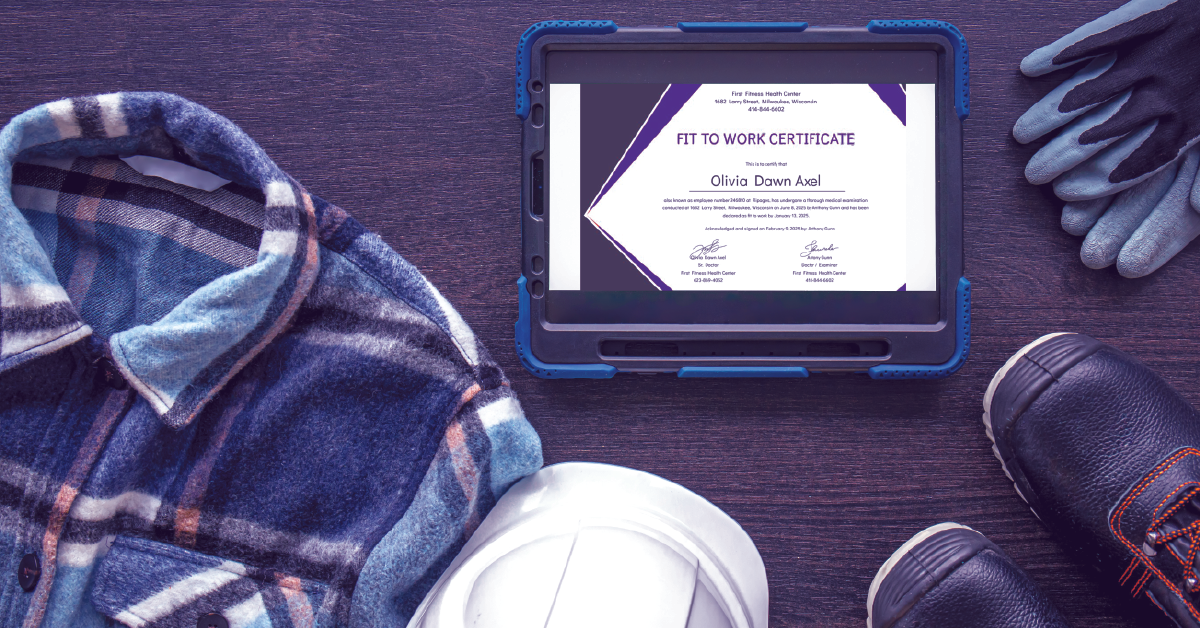
Have you ever imagined how things can turn around quickly when you’re just settling down on your new job? You have probably started making long-term plans to enjoy the benefits that come with the job, but you suddenly get a call that you’re being investigated for certificate forgery!
Oops! Someone just falsified your ‘hard copy’ fit-for-task certificate, and the counterfeit was traced back to you. This could be disastrous for your reputation, job and new plans.
No doubt, a ‘hard copy’ fit-for-task certificate has its pros and cons, but in a situation like this, where the cons outweigh the pros, what difference can a better alternative make? How is a digital fit-for-task certificate a game changer for every industrial blue-collar worker?
Why You Should Opt For A Digital Fit-for-Task Certificate?
Confidentiality
With a digital fit-for-task certificate generated by a blockchain-enabled technology like Seamfix Care, you can be assured that your certificate is being hosted on a secure database that unauthorised personnel can’t reach. By opting for this, only you, your occupational health service provider (OHSP), and your employer can access it.
Easy Access
Relieve your potential employer from the complex administrative procedure of requesting ‘hard copy’ certificates. By owning a digital fit-for-task certificate, it takes just a few clicks on a system like Seamfix Care to request, download, and verify your certificate’s authenticity without stress. The quicker you get through this process, the faster you get employed.
Accuracy
Avoid every possibility of making critical errors on information like misspelt names, mismatched photographs, and other possible errors tied around creating documents manually. With a digital certificate, you can breeze through fit-for-task verification accurately without delays.
Now that you understand that a digital fit-for-task certificate can make life easier for you, what if you aim for more by presenting a digital health certificate with an IDQR feature?
Seamfix Care’s IDQR is an innovation that allows certificate issuers to embed QR codes in the passport photograph on each certificate for better identity verification.
It builds trust between you and your employer and saves you from any legal mixup pertaining to document forging.
Save yourself and your future today. Start using Seamfix Care to generate digital fit-for-task certificates.
Related News
Working Late: How Manual Processes Can Hurt Your Productivity
by Temidayo Afolabi

Your journey into working late starts the minute you decide to stay past your scheduled work hours while everyone else leaves to rest and recharge to get a better head start for the next day.
In the past, staying late to work was a sign of commitment and dedication. It meant you had more on your desk than your normal work hours could fit in, but spending more time than usual at work could negatively impact the performance and quality of your work.
Now, this isn’t a stamp of approval to organise a workplace uprising. It is a much-needed reminder to perform work tasks better and more efficiently so you finish early without the underlying pressure of incomplete tasks.
The duties of most employees in occupational health services involve a lot of paperwork – signing off documents, scheduling appointments, meeting deadlines, going through questionnaires, filing reports, and supervising health surveillance. However, sticking to manual ways of doing these can be the reason you finish last at the office.
This is how manual work processes are slowing down your productivity and harming your efficiency:
Manual Processes Require More Time And Effort
Manual processes take time away from other important tasks. In fact, over 40% of employees feel burdened by spending at least a quarter of their work week on manual, repetitive tasks such as data collection, data entry, and scheduling, which they believe reduce productivity when not automated.
Manual Processes Hinder Innovation And Creativity
People often stick to manual work processes because they get too familiar with the methods and outcomes, and implementing a new approach may seem too strange and difficult. The drawback of this mindset is being left behind while others in similar vocations with way less expertise and experience forge ahead and get better results using technology.
Manual Processes Attract Security Risks
Manual processes such as archiving files physically or even storing data on unending spreadsheets can lead to unintended security breaches and vulnerabilities that put your business at risk of a lawsuit or hefty regulatory fines.
How else can you approach work to record better productivity? What can you do differently as an employee in occupational health services to avoid manual redundancies? Process automation – it is the use of technology to streamline complex business processes for simplicity to increase service quality and delivery or contain costs.
In organisations today, 50% of business leaders are ready to accelerate the digitization of internal work processes. This isn’t just about jumping on the “digital transformation bandwagon”, it’s about achieving greater results with simplicity and ease of work that guarantees job satisfaction amongst employees.
Take advantage of the technology specifically designed for occupational health service providers. Seamfix Care allows you to connect with clients, access health records on the go, and keep tabs on health surveillance without the stress that comes with it. Most importantly, it builds trust among stakeholders within the occupational health ecosystem as digital health credentials (passports, licences, certificates) that cannot be falsified or duplicated can be issued and verified with this technology.
Try Seamfix Care and experience maximum productivity.
Related News
Information Security: Can I Get Sued for Losing my Client’s Health Information as an OHSP?
by Temidayo Afolabi

A thousand things equate to the day-to-day obligations of occupational health professionals, but a very important one is medical data security. In healthcare, data security is the continuous practice of protecting patients’ information from unauthorized access, corruption, or theft throughout its entire lifecycle, whilst complying with regulatory bodies to ensure maximum security.
Think about how reluctant you get about revealing your deepest secrets to someone, anyone at all. Now that’s exactly what runs through the mind of an employee who needs to go through a round of health assessments and is concerned about having their medical record slipping into the wrong hands.
How bad can it get when you lose your client’s health information as an OHSP?
Can you get sued for such? Yes. If the misuse of their data resulted in harm to them, then your client may file a lawsuit to seek compensation.
The loss of clients’ health information through a data breach or file mismanagement can compromise the core value of confidentiality as widely practised in the healthcare system. Following this, Occupational Health Service Providers (OHSPs) may experience problems with their brand’s reputation and a decline in client trust and loyalty. Even worse, lawsuits or hefty fines from regulators.
How To Protect Your Clients’ Health Information
According to SecureWorld, OHSPs can secure health information in four effective ways:
- Data Encryption: Protect your client’s health information by converting its content into encrypted codes that cannot be decrypted by unauthorised personnel without an access key.
- Data Masking: Similar to data encryption, data masking locks some parts of the data from unauthorized personnel.
- Data Erasure: This method is useful for parts of data that are no longer relevant. Such data is then deleted by an external entity and cannot be recovered.
- Data Backup: As its name implies, duplicating health records and reserving the copy in a safe place in case the original version is lost.
Takeaway
The primary responsibility of an OHSP is to carry out various activities aimed at protecting and promoting the safety, health and well-being of workers. Providing (re)assurance to stakeholders regarding data security is a plus all OHSPs should work to achieve.
Your occupational health service delivery can improve with Seamfix Care, a comprehensive OHSP solution that combines the ability to properly secure your clients’ health information on a blockchain-powered cloud storage that only authorized personnel can access.
In addition to being a reliable solution for data security, occupational health services can be done faster with automated processes such as creating and sending digital questionnaires and issuing verifiable digital health certificates.
Ready to ensure data compliance and health surveillance? Use Seamfix Care.
Related News
Infographic: The OHSP Sphere Before and After Digital Transformation
by Temidayo Afolabi
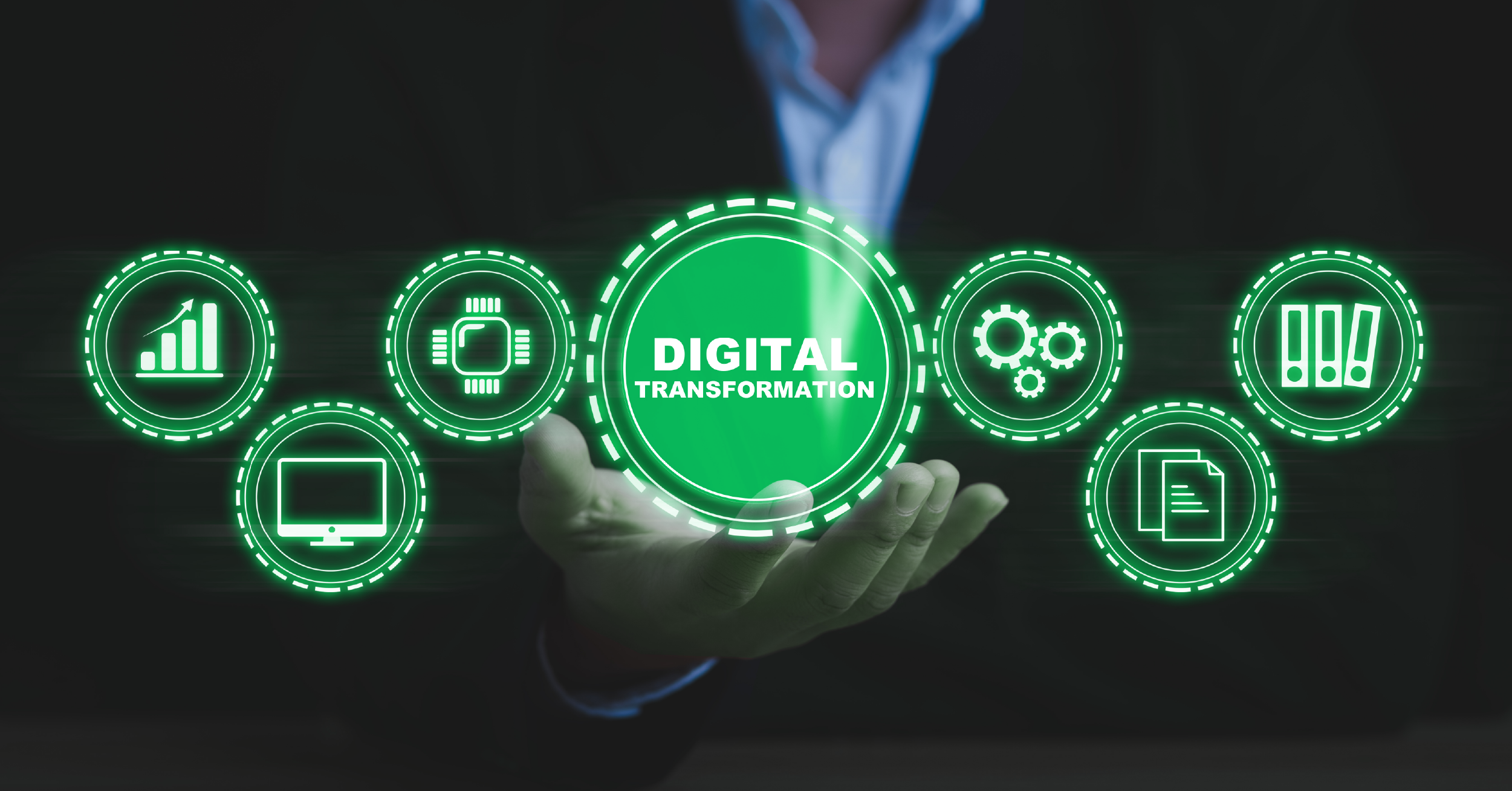
The Occupational Health (OH) Industry is one of the most critical industries in the world; every industry has a critical dependency on OH to ensure the highest degree of physical, mental, and social well-being of workers is maintained.
Years back, ensuring an industry filled with fully tested and certified workers was almost impossible. Fast forward to now and that technology has made an indelible impact and introduced remarkable changes to the industry.
What did the Occupational Health service delivery look like before digital transformation, and where is it now?
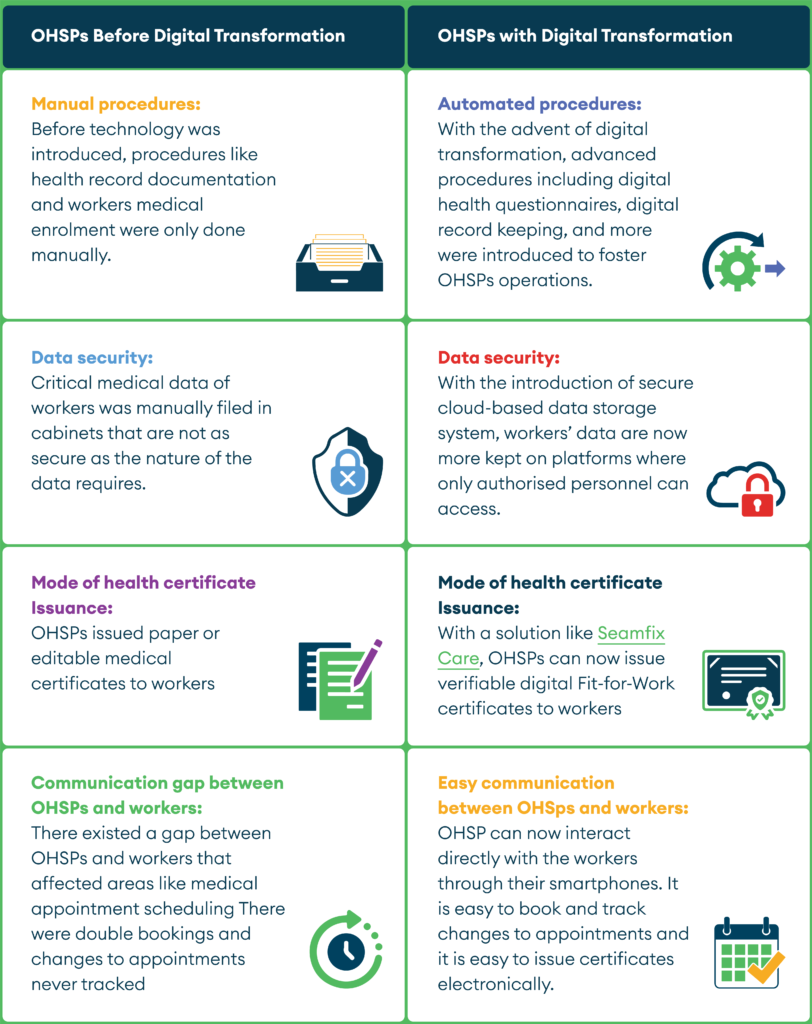

Seamfix is a new-generation brand that goes all out in researching business needs, proffering matching technological solutions, and providing opportunities for businesses to become more valuable to their customers.
With Seamfix Care, a state-of-the-art digital solution, OHSPs stand a better chance to navigate the industry easily and deliver valuable services to their clients. Want to explore further to see how this tool is specifically made for you? Have a chat with us today.
Related News
Seamfix Care: Innovation Towards Excellence
by Temidayo Afolabi

9 out of 10 Occupational Health practitioners have three motives that drive their activities:
- promoting and maintaining the highest degree of physical, mental, and social well-being for workers in any occupation,
- complying with every Occupational Health (OH) industry standard, and
- giving their clients the best customer experience possible across different industries.
As simple as these may sound, Occupational Health Service Providers(OHSPs) still run into problems that make these activities unachievable.
Healthcare is one of the most audited industries, meaning every process needs to work perfectly; every practitioner must be fully trained on every service they deliver, and the current systems that support the practitioners and their processes must be nothing short of perfection. Moreover, the Occupational Health industry comprises lean organisations and doesn’t have the luxury of time to lag on digital transformation like other industries.
When things are not put in place, it becomes hard for OHSPs to meet industry demands and professional expectations, and seamlessly execute everyday operations. This could be appointment scheduling, sorting through complex surveillance paperwork, securing and retaining health data, etc.
The need for a positive change is more visible than ever, a transformation is needed, and that is why the first step towards a new OHS experience has started…
During the heat of the pandemic, Adrian Walter (Seamfix’s UK Business Lead), had a flair for innovating a health solution to improve adherence to organisations’ health and safety protocols. Which turned out to be beneficial during the pandemic as many companies were able to comply with COVID protocols.
Following the successful innovation, he began to ideate how to create the perfect Occupational Health experience. With the help of a major OHSP stakeholder, they imagined a world with less administration. A world where important compliance credentials such as medical certificates are one click away from being with the right people. A world where the worker carries their health passport on their smartphone. They also envisaged better data security, compliance, and the many bottlenecks in Occupational Health Services.
The many ideas that were brought up were able to see the light of day when Adrian Walter joined Seamfix, a software development company with a rich history of building automated systems for businesses notwithstanding size.
Today, Seamfix Care, a digital and holistic system that allows Occupational Health providers escape manual, redundant processes by digitising their service offerings to maintain an optimum standard of delivery, is undergoing a pilot and is set to achieve groundbreaking results!
Seamfix Care is that powerful technology that will transform the Occupational Health industry and keep it thriving amidst rapid changes occurring in the world. It is an industry-led platform that is set to revolutionize Occupational Health in the areas of business process automation, credential management, health examinations and surveillance etc.
Seamfix Care will not only be the digital bridge connecting credential issuers, the subjects (workers), and credential verifiers, but it will also be an open marketplace where every party gets connected to their potential clients. It’s uniquely tailored to the end-to-end needs of the Occupational Health industry and the clients across multiple industries.
What has been demonstrated is that with the right technology partner, Occupational Health companies can deliver innovative services through processes influenced by digital transformation.
Adrian Walter and the Seamfix team are now starting to work with Occupational Health providers and independents to refine the technology, hence ensuring that Seamfix Care is the perfect intersection between Occupational Health companies and the many industries they support. If that sounds like you, get in touch.
Related News
Seamfix: The Value-oriented Identity Solution Provider for Every Nigerian in the UK
by Temidayo Afolabi

Since the Nigerian government introduced the National Identification Number (NIN) over sixteen years ago, it has become a crucial document required at almost every important point of identity verification- including passport issuance, national voter’s card registration, driver’s license registration, etc. The NIN has recently become the go-to reference identity document for every Nigerian adult.
If you are a Nigerian residing in the UK and you have not given so much thought to having your NIN like other Nigerians, perhaps, you have assumed you must catch a flight back to Nigeria to get it done. Here is a self-explanatory guide on how Seamfix, as an accredited NIMC partner, can help you get a valid NIN in the UK in any of our walk-in centres.
By the way, your identity is a gift that must be cherished; as precious as it is, it could be problematic when managed carelessly, and that’s why you must ensure you tick every safety checkbox regarding your information.
According to the National Identity Management Commission, “your National Identification Number is used to tie together all records about you – demographic data, fingerprints, head-to-shoulder facial picture, other biometric data, and digital signature – in the National Identity Database, making it relatively easy to confirm and verify your identity when you engage in travels and transactions.”
To make life easier for Nigerian citizens, NIMC recently announced a move inspired by digital transformation to replace NIN with Virtual National Identity Number (vNIN). As the name suggests, it is a virtual alternative that is easily accessible, more secure, and still unique to every citizen as usual.
At Seamfix, we are big on making processes seamless and results favorable; hence, we hold your hands and help you integrate into vNIN quickly. With our agent code, you can quickly generate yours for any registration while you can be assured that your data is protected and away from prying eyes.
vNIN is a more secure digital alternative to the unique numbers every registered individual presents at every required point. With vNIN, users now have to generate and present one-time tokens at every point in time. Once again, Seamfix provides the cover you need from the vulnerability attached to exposing your NIN.
Beyond personal reasons, having a government-recognised means of identification comes in handy the moment you decide to register a business in Nigeria. Apart from serving as a means of confirming your citizenship, it builds trust and credibility with your prospects as you are discoverable and verifiable.
Rest assured.
We will always prioritise making life easier for you with more digital innovations any time, any day.
Related News
7 Frequently Asked Questions about Seamfix Care Answered
by Temidayo Afolabi
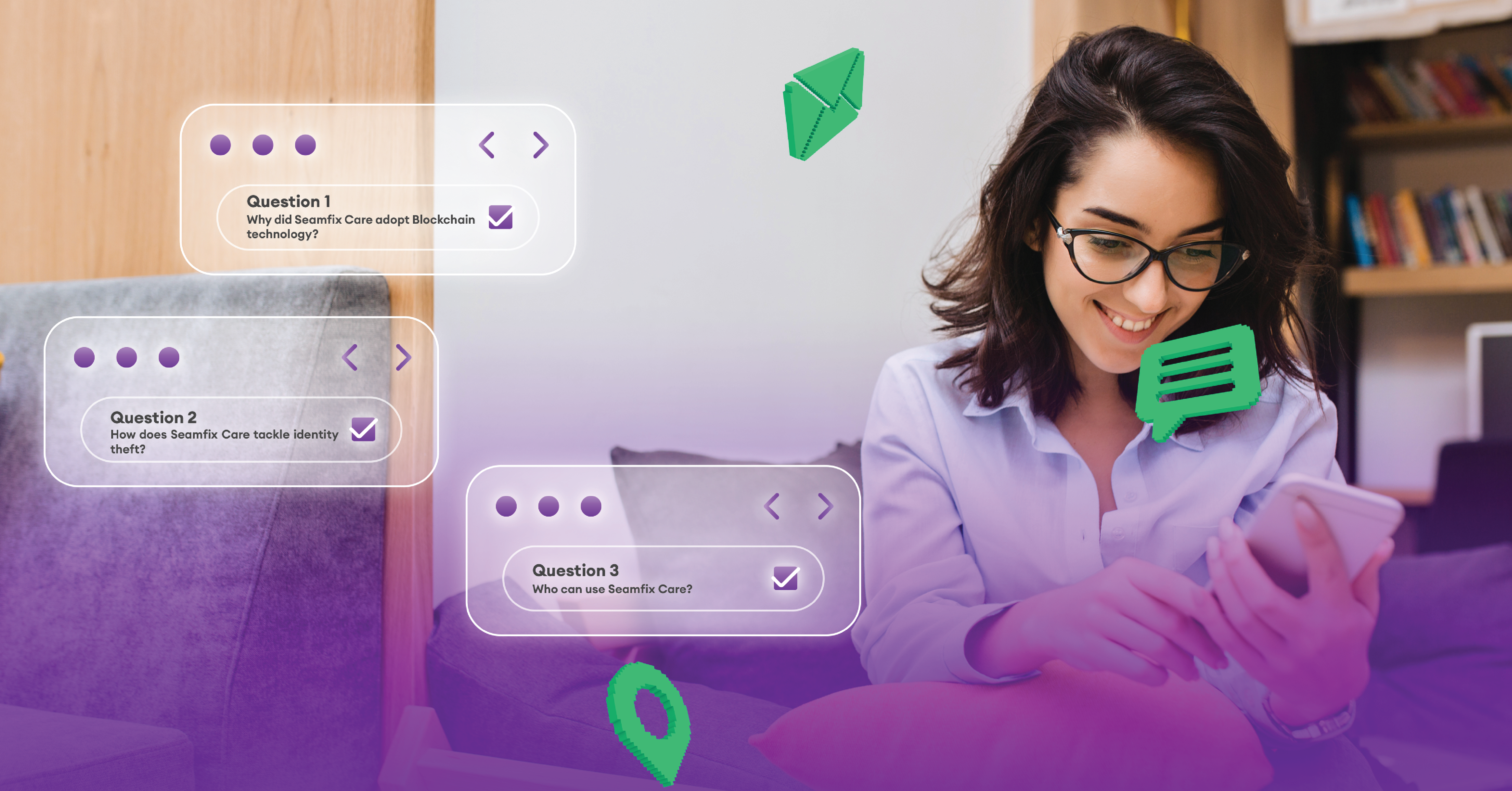
Smart people deserve smart solutions. According to Malcolm Forbes, the American entrepreneur, “the smart ones ask when they don’t know. And, sometimes, when they do.” Hence, we have compiled a list of some of the most common questions our customers have about Seamfix Care and the clearest possible answers to these questions.
Rest assured, your concerns about what Seamfix Care is and what it does are about to be addressed. Read on!
What is Seamfix Care?
Seamfix Care is an all-in-one solution that furnishes your business with standardized digital processes, including biometric technology, digital credential management, data verification, and workers’ data storage. It is solely developed to substitute your tasking manual processes with seamlessly automated ones.
Who can use Seamfix Care?
Seamfix Care easily transcends various industries due to its unique features that can provide vast possibilities. These industries currently benefit from Seamfix Care – occupational health, professional training centres, occupational workers, and government agencies, among others. Summarily, Seamfix Care satisfies credential issuers, credential verifiers, and credential owners at the same time.
Is my data encrypted on Seamfix Care?
Yes! Seamfix Care prioritises your data’s protection as much as you do. It automatically encrypts your data only to allow authorised individuals to access it when required. With Seamfix Care, you can be sure your data is always in the right hands.
How does Seamfix Care tackle identity theft?
With up-to-date biometric technology, Seamfix Care ensures that no generated credential is duplicated falsely or repurposed by any individual besides the owner. It enables verifiers to scan and reveal the only identity tied to each credential on the go; that way, it becomes impossible for someone else to claim another’s credential for any purpose.
Why did Seamfix Care adopt Blockchain technology?
Besides the term “Blockchain” being a buzz word in technology and innovation, Seamfix Care adopted blockchain technology because of its uniqueness as a decentralised system that can house data securely and make it readily available to only authorised individuals. Aside from satisfying its users, Seamfix Care is big on data security and validity, hence the adoption of a system that readily provides the solution.
Does Seamfix Care guarantee absolute credential security?
Due to the vulnerability of credentials and how they can be easily altered, Seamfix Care uses SeamCred – a smart credentialing system to manage its credentialing process.
Basically, the credentials on Seamfix Care are equipped with an “IDQR” – the easiest way to think about an IDQR is a QR code with your photo in it. This means that the digital identity is encrypted and cannot be decrypted by a third party.
Better still, your issued credentials are secured on a blockchain, so they can be verified without moving the credentials from the subject’s smartphone to the verifier’s system.
Is my safety critical medical information secure on Seamfix Care?
Due to the sensitivity of medical information, Seamfix Care ensures your data is unavailable to unauthorised personnel. It helps you maintain the required confidentiality in your operations, and allows you easy access to your information when required. You never have to worry about sensitive information getting into the wrong hands.
Now that you know more about Seamfix Care than you did before reading this article, why not see it in action by booking a demo session today. And if an extra question just popped up, why not speak to an expert waiting at the other end now?
